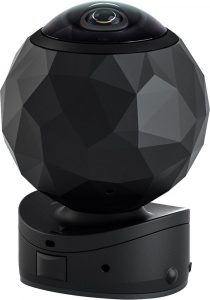 Innovative optics technology is a cutting-edge field that aims to revolutionize the way we capture and perceive images. The technology developed by 2Pi Incorporated, an MIT spin-off startup, focuses on creating lenses for sensors, cameras, and consumer electronic devices like AR/VR headsets. The optics technology has been under development for the last decade, with 2Pi Optics working on this specific lens technology for the last three years.
Innovative optics technology is a cutting-edge field that aims to revolutionize the way we capture and perceive images. The technology developed by 2Pi Incorporated, an MIT spin-off startup, focuses on creating lenses for sensors, cameras, and consumer electronic devices like AR/VR headsets. The optics technology has been under development for the last decade, with 2Pi Optics working on this specific lens technology for the last three years.
How 2Pi Optics’ lenses work
The company’s focus is on achieving high-resolution and crisp images in sensor arrays used by various manufacturers. 2Pi Optics does this by leveraging wafer-scale semiconductor manufacturing capabilities for high-volume, low-cost, and scalable flat optics production and integration.
The 2Pi Optics lens replaces the conventional stack of lenses with a single, thin piece of glass known as metasurface flat optics to overcome the fundamental limitations of traditional optical systems. This transformative technology preserves and can even improve optical performance, while achieving smaller form factors, lighter weights, better accuracy, and lower costs in the process.
The design prioritizes discrete wavelengths, which means that the lenses are optimized for specific colors or wavelengths. For instance, they can isolate infrared wavelengths, while disregarding other colors, which is particularly useful in AR/VR products where color accuracy may not be critical.
Traditional lenses sometimes sacrifice stability and clarity for specific features or functions. However, the technology developed by 2Pi Incorporated aims to overcome these limitations by providing precise sensor images without compromising either. 2Pi Incorporated has rolled out prototypes and samples, and partnered with sensor module integrators who will integrate their lenses into their sensors and sell them to original equipment manufacturers (OEMs) like Apple, Matter, and Microsoft.
Advantages of single glass lenses
One of the key advantages of this innovative optics lens technology is its cost-effectiveness. By utilizing a single piece of glass and employing low-cost manufacturing techniques typically used for computer chips, the production cost is significantly reduced. Assembly and packaging costs are also minimized, making the technology not only performance-enhancing but also economically viable.
While the lenses are made from thin glass, they are designed to be tough and durable. They provide a wider field of view and are unaffected by variations in temperature. They can be directly bonded onto image sensors, creating a monolithic piece that improves the overall ruggedness of the device. 2Pi Optics lenses can be used in a variety of consumer electronics devices, in industry automation, and automotive technologies.
Conclusion: 2Pi Optics brings improved performance and reduced costs into clear view
In conclusion, the innovative lens technology developed by 2Pi Incorporated is disrupting optics in the best way possible. By replacing conventional stack lenses with a single, thin piece of glass, this technology delivers high performance and reduced size, weight, power and cost, enhancing the overall consumer experience. With partnerships in place and a product launch on the horizon, it is an exciting time for the future of optics lens technology. While currently in prototype phase, a full product launch is expected in 2024.
For more information on the technology, you can email info@2pioptics.com or visit 2Pi Optics’ website for more information.
Interview by Scott Ertz of F5 Live: Refreshing Technology.
Get $5 to protect your credit card information online with Privacy.
Amazon Prime gives you more than just free shipping. Get free music, TV shows, movies, videogames and more.
The most flexible tools for podcasting. Get a 30 day free trial of storage and statistics.
Podcast: Play in new window | Download
Subscribe: Apple Podcasts | RSS | More

 Virtual reality has become a big business. Brands from several companies, including Apple and Facebook, have gotten into the virtual reality space in recent years. However, an up-and-coming aspect of the virtual space is augmented and mixed reality – a slightly different take on the concept.
Virtual reality has become a big business. Brands from several companies, including Apple and Facebook, have gotten into the virtual reality space in recent years. However, an up-and-coming aspect of the virtual space is augmented and mixed reality – a slightly different take on the concept. 